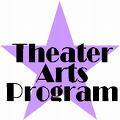
Theater Arts Reviews
|
Classical Ballet Training
Theater Arts Ė Classical Ballet
Classical ballet is a type of ballet. Training in Classical Ballet requires dedication for strenuous workouts and a strong subordinate body. The styles of classical ballet training can be divided into seven types. The most famous ones are Vaganova or Russian method, Balanchine or American method, Royal or English method, Cecchetti or Italian method, Royal Academy of Dance method.
Dancers usually wear white, black, pink and flesh colored tights and a leotard. The styles and colors of the leotard can vary according to the storyline. The leotard garment has been named after the French acrobat Jules Leotard who made it famous. The shoes worn by dancers are very important as they will have a direct results on the feet of the dancer and can also cause harm to them. During the course of time different kinds of shoes have been made for ballet dancers. At first the dancers are made to work on soft technique shoes rather known as flat shoes. Once the bones are no longer fragile and have become tough and mature enough the dancers are made to practice on Pointe shoes. The tutu is not a obligation though it can be used to bring in royalty with crochet sequenced wrap skirt.
Pointe shoes, if not worn properly and on proper time can cause intense damage and sometimes disability to the dancer especially if high impact dancing is done. Before starting to wear them, itís very essential to get a thorough bone structure diagnosis done by the doctors. Although the ballet trainers might be of some help but they cannot outdo the doctors who are more familiar with the anatomy of the body. The hardness of the bones of not apart ankles, but also knees, hips, arms and back should be checked along with the check of muscle density. Itís advised that you should foundation wearing the Pointe shoes after sixteen. After starting their advantage the dancers should practice vigorously for long hours to build their strength. If compared to all other kinds of sports football is the only game which requires more strength than ballet.
Partly eighty percent of ballet dancers get injured at some point of time while performing. Some movements are so out of the natural range that it can lead to unhealthy stress on the body and if not done correctly can result in serious consequences. Many beginners get knee injuries and shin splits if they donít do the plying, which is deeply bending the knees in a correct way. Warm up exercises should be done before starting the practice or performance. Other surrounding conditions should be taken charge of and things like hard floor, cold temperature and uncomfortable clothes should always be avoided.
Another major issue with the ballet dancers is that they are expected to have a rangy figure and should be on the lighter side whereas some dances require the dancers to create an illusion of floating. So as to maintain a beautiful body, the dancers start dieting and sometimes develop eating disorders homologous as bulimia, anorexia or nervosa. Sometimes to garner away from eating and to control their weight many dancers switch to smoking. They find this method less stressful and thatís the instigation why forty percent of the ballet dancers both women considering well seeing women are smoker. This is a serious health issue which has serious consequences later on in life. If the dances control their diets to the farthest extent they are and on the danger of risking the strength required.
But when done correctly and according to the rules, it can perform as a great strength training program. Many athletes take ballet quantum time classes to make their bones and muscles more strong and body more flexible. But the ballet dancers have very tough competition and activity security is also very low. This adds to their stress.
Other dance forms such as modern ballet, contemporary ballet and hip hop dance are basically inspired works from classical ballets.
 |
 |
 |
Places And People Famous For Influencing Theater Arts
Various Dance Forms Of India Relating Theater Arts
More Theater Arts Articles
... audience. Along with that the actors wore high heeled boots and large gloves to make them more vividly visible. Stories not only revolved around Dionysus but also were based on divergent Greek chimerical characters. The structure of the theater at that time was known due to Theatron. They were open - ...
... the Byzantine and Gothic art. The Eastern art was mostly influenced by the Western medieval art. Not much concentration was paid to the realistic lesson. The costumes plenty were turn up patterning, which means the basic color of the robe was emphasized upon rather than enhancing firm by playing with ...
... own type of mime depending on their culture. The best for instance is the Indian classical dance. Mukhabinaya or face and eyes expression was a part of the Indian dance Natya Shastra original to Bharat Muni Theater, which is an Indian version of mime. It includes a vast vocabulary of furtherance gestures ...
... early 1800s and came to its complete form in mid 1800s. This form of art is actually a mixture of various dance forms and tune with a unique twist. There are four leading characters in Beijing opera. The Sheng is the male lead role with subtype Laosheng, old and wise book, Xiaosheng, the younger version ...

|
| Copyright © 2006-2012 Internet Marketing Tools, All Rights Reserved |